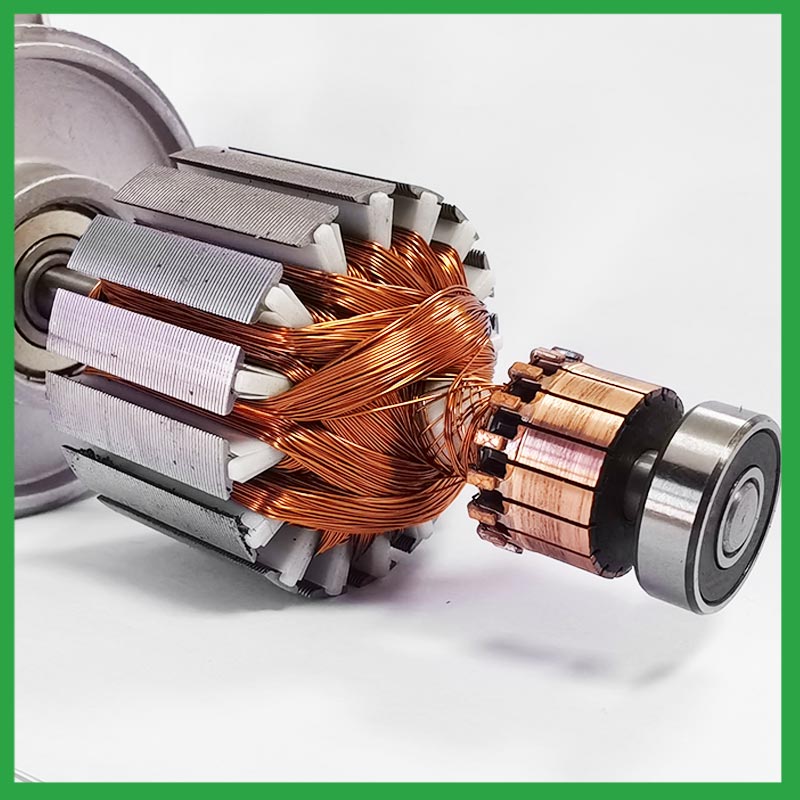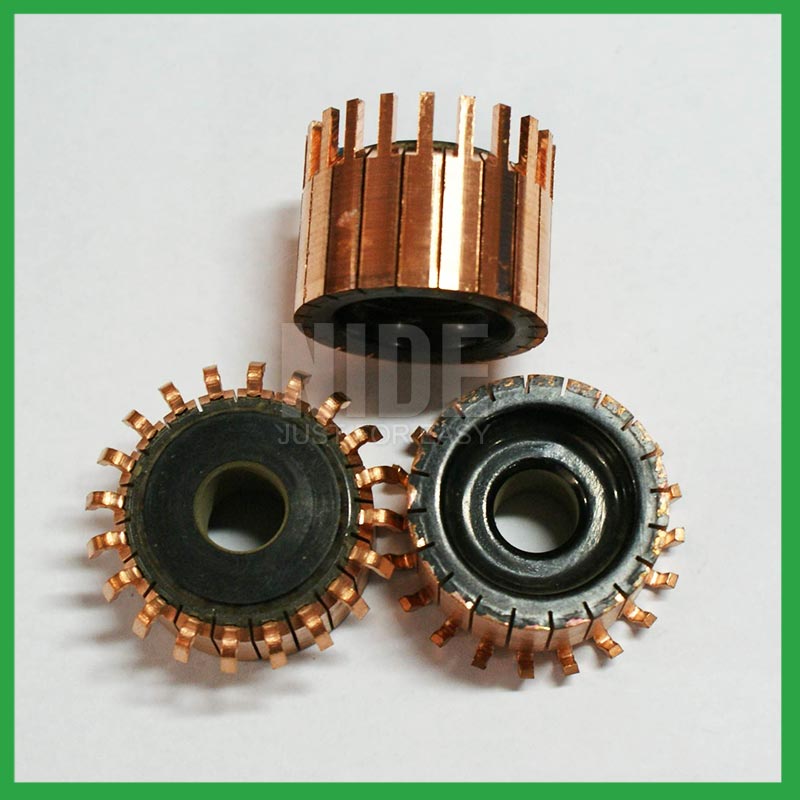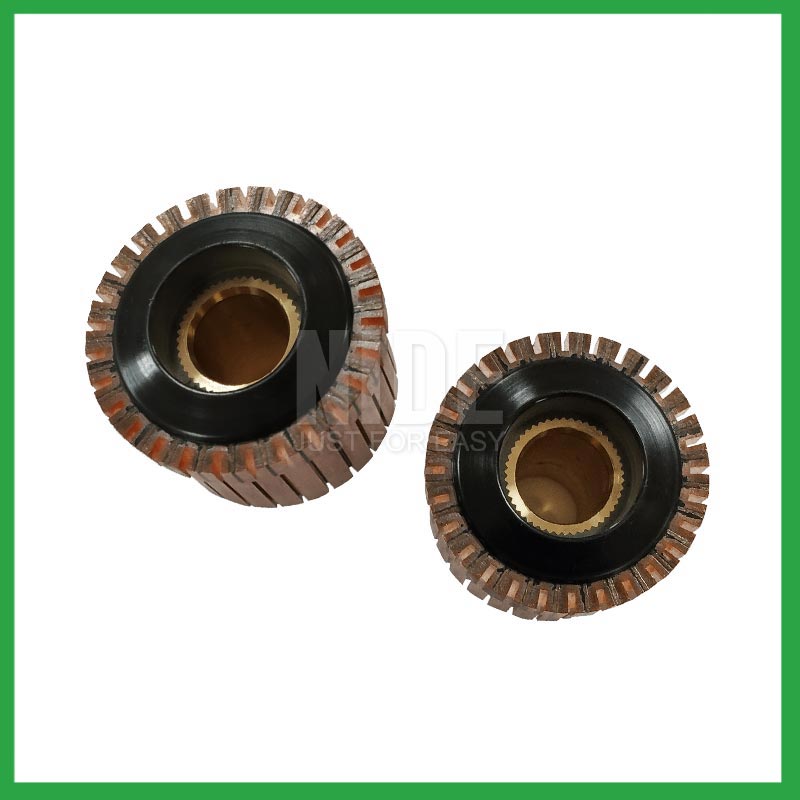2024-09-09
Direct Current (DC) motors have been integral to a wide range of industrial applications, from powering small household appliances to driving large industrial machinery. The versatility and efficiency of DC motors make them essential in many sectors, including automotive, robotics, and consumer electronics. A key component in ensuring the optimal performance of a DC motor is the commutator. Without the commutator, the DC motor's functionality would be greatly compromised.
At Nide International, a global leader in motor manufacturing solutions, we understand the crucial role that commutators play in the performance and longevity of DC motors. In this article, we will explore the essential function of the commutator, how it influences DC motor performance, and why maintaining this component is critical to ensuring long-term motor efficiency.
The commutator is a mechanical component of a DC motor that serves as a switch to reverse the current direction in the motor’s armature windings. This current reversal is necessary to keep the motor spinning in the same direction. Essentially, the commutator is the part of the motor responsible for converting electrical energy into mechanical energy, enabling the motor’s rotor to spin continuously.
A typical commutator consists of multiple copper segments arranged around the motor's shaft. These segments are insulated from each other and connected to the motor’s windings. The commutator works in conjunction with carbon brushes that make contact with the commutator's segments as it rotates. This contact ensures the current is appropriately directed, maintaining continuous movement in the motor.

In a DC motor, the armature (or rotor) consists of a series of wire windings that generate a magnetic field when current flows through them. The interaction between this magnetic field and the motor’s fixed magnets (stator) creates the torque that drives the rotor. However, if the current direction in the windings remained constant, the torque would reverse after every half-turn, causing the rotor to oscillate instead of rotating continuously.
This is where the commutator comes into play. By switching the direction of the current at the right moment—just as the rotor reaches the halfway point in its rotation—the commutator ensures that the torque remains in the same direction, allowing the motor to keep spinning smoothly. The brushes slide over the rotating commutator, transferring current while ensuring the necessary polarity change as each commutator segment passes under them.
The commutator plays a vital role in several aspects of DC motor performance, making it an indispensable component in maintaining the motor’s efficiency, reliability, and output.
As previously mentioned, the primary function of the commutator is to reverse the current flow in the armature windings to ensure that the motor continues rotating in the same direction. Without this reversal mechanism, the motor would experience irregular torque, leading to jerky movement or complete stoppage. By enabling smooth and continuous rotation, the commutator ensures the motor operates efficiently and reliably.
The torque produced by a DC motor depends on the interaction between the magnetic field generated by the armature and the field produced by the stator magnets. The commutator’s ability to switch the current at precisely the right moment helps maximize this interaction, ensuring optimal torque production. This is especially critical in applications requiring consistent performance, such as electric vehicles, industrial machinery, and power tools.
Without proper commutation, the torque generated by the motor would fluctuate, leading to reduced efficiency and potentially damaging the motor over time.
The efficiency of a DC motor is closely linked to how effectively the commutator performs its role. By ensuring that the current flows in the correct direction through the armature windings, the commutator minimizes energy losses and prevents overheating. A well-functioning commutator allows the motor to convert electrical energy into mechanical energy with minimal loss, enhancing the overall efficiency of the motor.
Nide International manufactures commutators with precision to ensure that DC motors operate at their highest possible efficiency, offering long-lasting performance and reduced energy consumption.
DC motors are known for their excellent speed control capabilities. By adjusting the input voltage, the motor’s speed can be precisely regulated. The commutator plays a key role in this process, as it ensures that the motor’s rotation speed corresponds to the input voltage. With a reliable commutator, manufacturers can achieve fine control over motor speed, making DC motors suitable for applications that require variable speeds, such as electric drills, fans, and conveyor belts.
Although the commutator is a wear-prone component due to the constant friction between the commutator segments and the brushes, its proper design and maintenance significantly impact the overall durability of the motor. A high-quality commutator made from durable materials minimizes wear on both the brushes and the commutator itself, extending the lifespan of the motor.
At Nide International, we use premium materials and advanced manufacturing techniques to produce durable commutators that are resistant to wear, ensuring that our motors deliver reliable, long-lasting performance.

Given the commutator's crucial role in DC motor performance, it's important to monitor its condition regularly. Over time, wear and tear can affect the commutator, leading to motor inefficiency or failure. Some common issues with commutators include:
Maintenance Tips:
By maintaining the commutator in good condition, you ensure that the DC motor continues to operate efficiently and reliably, minimizing downtime and repair costs.

The commutator is an essential component in the performance and reliability of DC motors. By ensuring continuous motion, optimizing torque production, enhancing efficiency, and improving speed control, the commutator plays a pivotal role in maintaining the motor’s overall effectiveness. However, the commutator is also subject to wear and tear, making regular maintenance crucial for long-term performance.
At Nide International, we are dedicated to producing high-quality commutators and DC motors that meet the demands of today’s industries. With precision engineering and durable materials, our motors deliver the consistent performance and longevity that modern applications require.
By Nide International